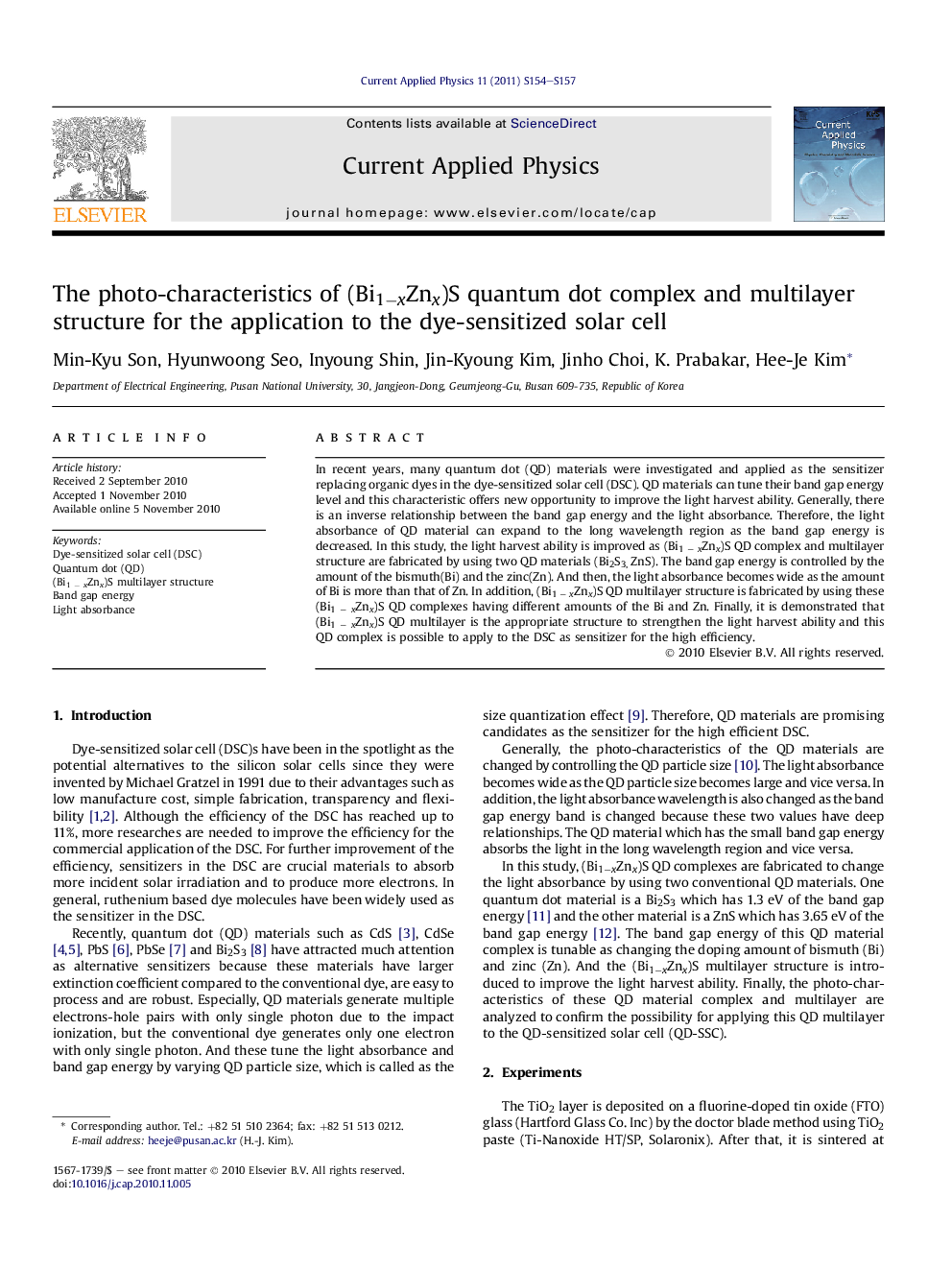| Article ID | Journal | Published Year | Pages | File Type |
|---|---|---|---|---|
| 1786914 | Current Applied Physics | 2011 | 4 Pages |
In recent years, many quantum dot (QD) materials were investigated and applied as the sensitizer replacing organic dyes in the dye-sensitized solar cell (DSC). QD materials can tune their band gap energy level and this characteristic offers new opportunity to improve the light harvest ability. Generally, there is an inverse relationship between the band gap energy and the light absorbance. Therefore, the light absorbance of QD material can expand to the long wavelength region as the band gap energy is decreased. In this study, the light harvest ability is improved as (Bi1 − xZnx)S QD complex and multilayer structure are fabricated by using two QD materials (Bi2S3, ZnS). The band gap energy is controlled by the amount of the bismuth(Bi) and the zinc(Zn). And then, the light absorbance becomes wide as the amount of Bi is more than that of Zn. In addition, (Bi1 − xZnx)S QD multilayer structure is fabricated by using these (Bi1 − xZnx)S QD complexes having different amounts of the Bi and Zn. Finally, it is demonstrated that (Bi1 − xZnx)S QD multilayer is the appropriate structure to strengthen the light harvest ability and this QD complex is possible to apply to the DSC as sensitizer for the high efficiency.
► (Bi1−xZnx)S quantum dot complex as the sensitizer of the dye sensitized solar cell. ► The photo-characteristics of (Bi1−xZnx)S are changed by controlling the amount of the bismuth and zinc. ► Multilayer is introduced for improving the light absorbance. ► This quantum dot complex and multilayer structure can be applied to the dye sensitized solar cell.
